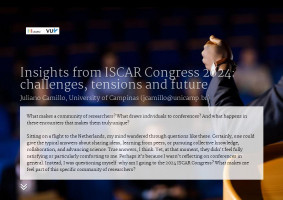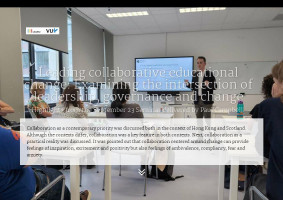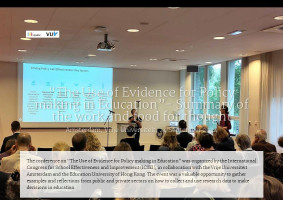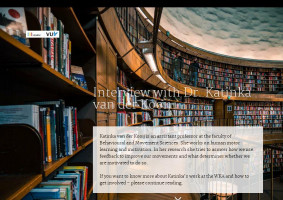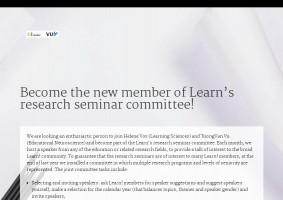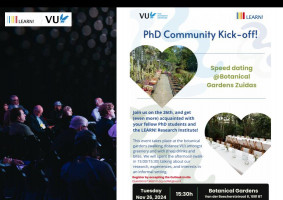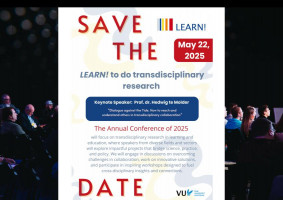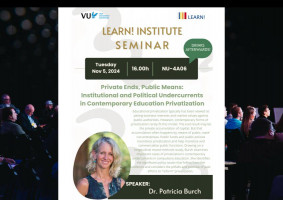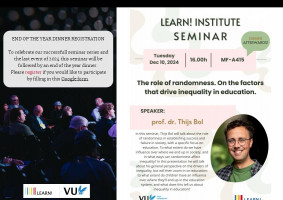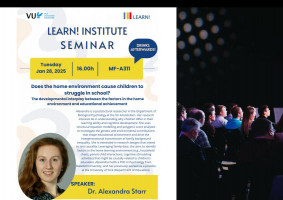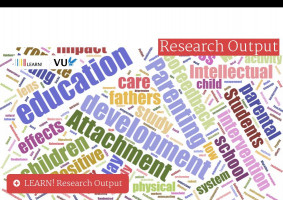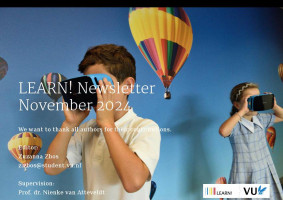What makes a community of researchers? What draws individuals to conferences? And what happens in these encounters that makes them truly unique?
Sitting on a flight to the Netherlands, my mind wandered through questions like these. Certainly, one could give the typical answers about sharing ideas, learning from peers, or pursuing collective knowledge, collaboration, and advancing science. True answers, I think. Yet, at that moment, they didn’t feel fully satisfying or particularly comforting to me. Perhaps it’s because I wasn’t reflecting on conferences in general. Instead, I was questioning myself: why am I going to the 2024 ISCAR Congress? What makes me feel part of this specific community of researchers?
It is not the case that those general questions were easy to answer objectively —whatever that means — or that the typical answers do not apply to the ISCAR Congress. Quite the opposite. But deliberately including myself in the equation adds layers of complexity, making any answer more permeated by feelings, memories, and based on the very fact that much of what I think (including about conferences) is possible by somehow being part of this community. What follows is a non-objectivist attempt to provide insights about the ISCAR community and what happened at the 2024 Congress.
Some words on ISCAR and the 2024 ISCAR Congress
The International Society for Cultural-Historical Activity Research (ISCAR) is a multidisciplinary association formally founded in 2002 through the integration of two legacy organizations: the International Society for Cultural Research and Activity Theory (ISCRAT) and the Conference for Sociocultural Research. Both organizations were dedicated to supporting scholarly research and communication around sociocultural, cultural-historical, and activity theory approaches. Broadly speaking, the ISCAR community draws from a rich theoretical heritage established by L.S. Vygotsky, A.N. Leontiev, A.R. Luria, and others, sharing a common commitment to studying culturally mediated practices and the societal, cultural, historical, and participatory/transformative dimensions of human development.
Every three years, this community comes together to organize the ISCAR Congress.
In 2024, considering that we navigate through complex global issues like climate change, inequality, and rapid technological advancements, the ISCAR Congress embraced the theme "Inclusiveness as a Future Challenge," emphasizing the critical need for diverse voices and bold perspectives to address the problems we face today.
ISCAR: welcoming space for diverse groups to enhance the legacy and develop the theory
Naturally, the question of "what makes a community of researchers?" didn’t start— or end — on my flight to the Netherlands. The moment I stepped into the first day of the congress, the question became even more vivid. In the case of ISCAR, I realized that any answer couldn’t be framed solely in terms of sharing an author's legacy or a single theoretical perspective. Something unique was evident: on the very first day, three groups worked separately but shared the same space and theme. One focused on Cultural-Historical Approaches to Children’s Development and Childhood (CHACDOC), another on Sociocultural Approaches to Science, Technology, Engineering, and Mathematics (STEM) Education, and the third group had the crucial task of welcoming and nurturing the next generation of researchers within the ISCAR community: the Pre-Congress PhD Day.
Certainly, the authors' legacy and shared theoretical perspectives were present across these activities, inspiring and supporting the current generation of researchers. However, participants were also fundamentally engaged in expanding the scope of this legacy and theory, addressing contemporary challenges, exploring new research methodologies, and considering how they could transform reality.
What followed at the conference carried much of the same spirit. The keynote presentations — "Activist/transformative theory for education premised on changing the-world-and-ourselves within world-historical struggles" by Anna Stetsenko; "Emotional Imagining of Infants and Toddlers under the Motivated Conditions of a Conceptual PlayWorld" by Marilyn Fleer; "Developing in Interaction: Growing Together in Developmental Education" by Marjolein Dobber; and "Transformative Agency in Fourth Generation Cultural-Historical Activity Theory: Enactment beyond Classic Utopianism" by Annalisa Sannino —invited us to explore the expansion of theoretical frameworks, critically examine our research approaches in light of the current crisis, and resist an oversimplified unification under the labels sociocultural, cultural-historical, activity-theoretical, and so on. There are indeed shared and common grounds, but also distinct approaches—sometimes more subtle, sometimes more explicit— that point to different commitments within theory, methodology, and activism in a field brimming with possibilities.
On the other hand, a successful conference is about more than just keynote presentations. In many of the parallel sessions I attended, that same spirit was evident, even with the limited number of participants able to attend. These attendees were not only there to formally present their research but also to take a break from their daily routines, allowing themselves to engage in meaningful conversations during parallel sessions, symposia, and over coffee or dinner.
ISCAR: welcoming space for tensions and contradictions
"Inclusiveness is not only a future challenge! It is a challenge for now!" a woman proclaimed during the general meeting at the end of the 2024 Congress. And there were a lot of other tensions: over the price of the subscription, over the food and the place in which the conference took place, over the traditional structure of the meeting that needs to change to accommodate more people. There were also tensions regarding the new regional representatives and the new president of the association. There were tensions regarding the correct terminology and how we position ourselves within specific branches of the theory. There were also tensions about whether we are truly making the world a better place or merely falsifying reality with our theory and research.
There were tensions... There were tensions... There were tensions...
It is not a matter of pursuing fewer tensions — either when discussing the significance of the congress or the robustness of the theoretical framework. We are dealing with human phenomena: social, cultural, material, historical... We are dealing with transformations. There are tensions!
It is in fact a matter of how we embrace the tensions — not diluting or erasing them, but recognizing them as a source of development and an inherent part of our collective struggle to create alternative futures in our endeavor of becoming humans. That is part of the answer to why I attend the ISCAR Congress and feel part of this unique community of researchers.




